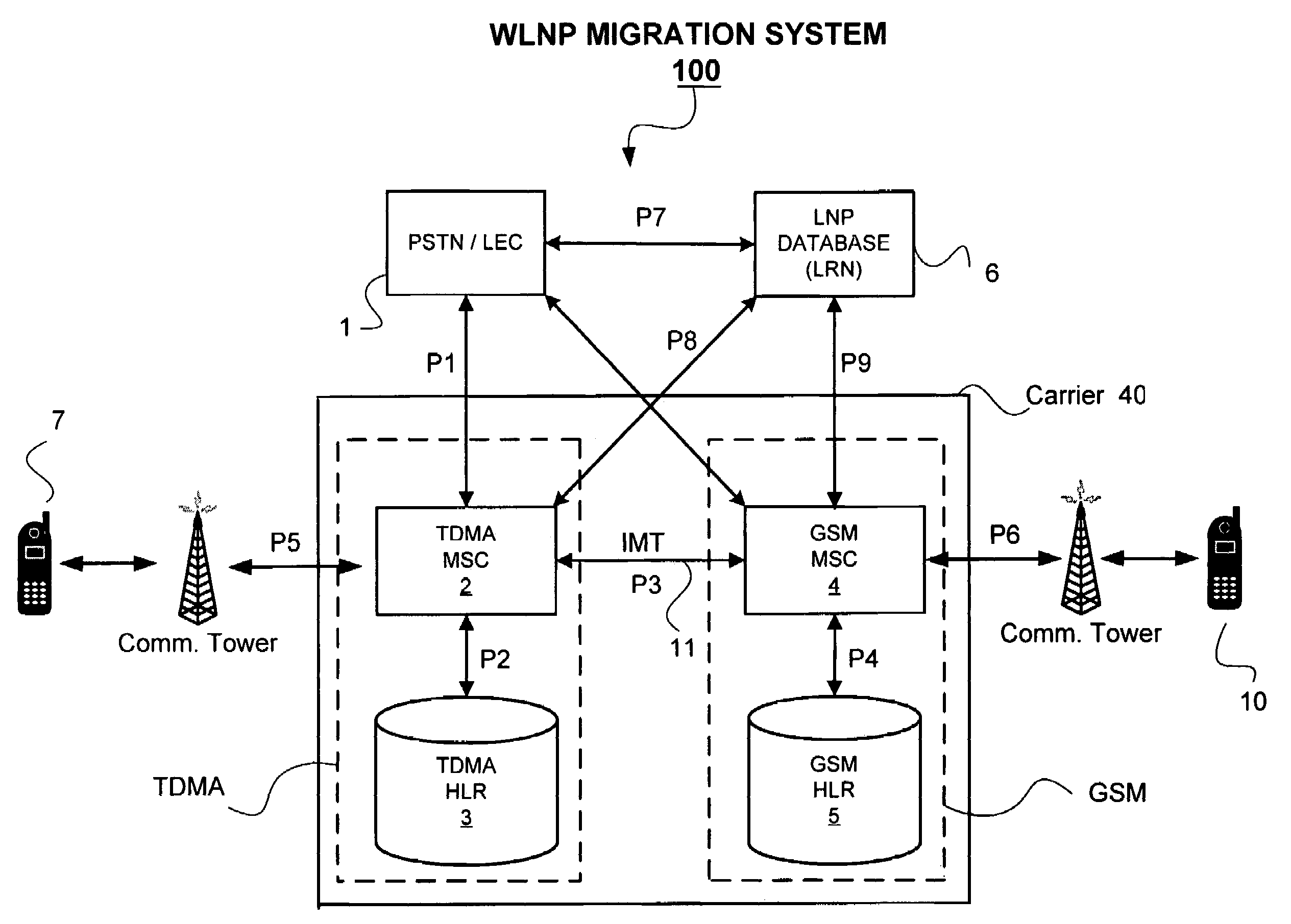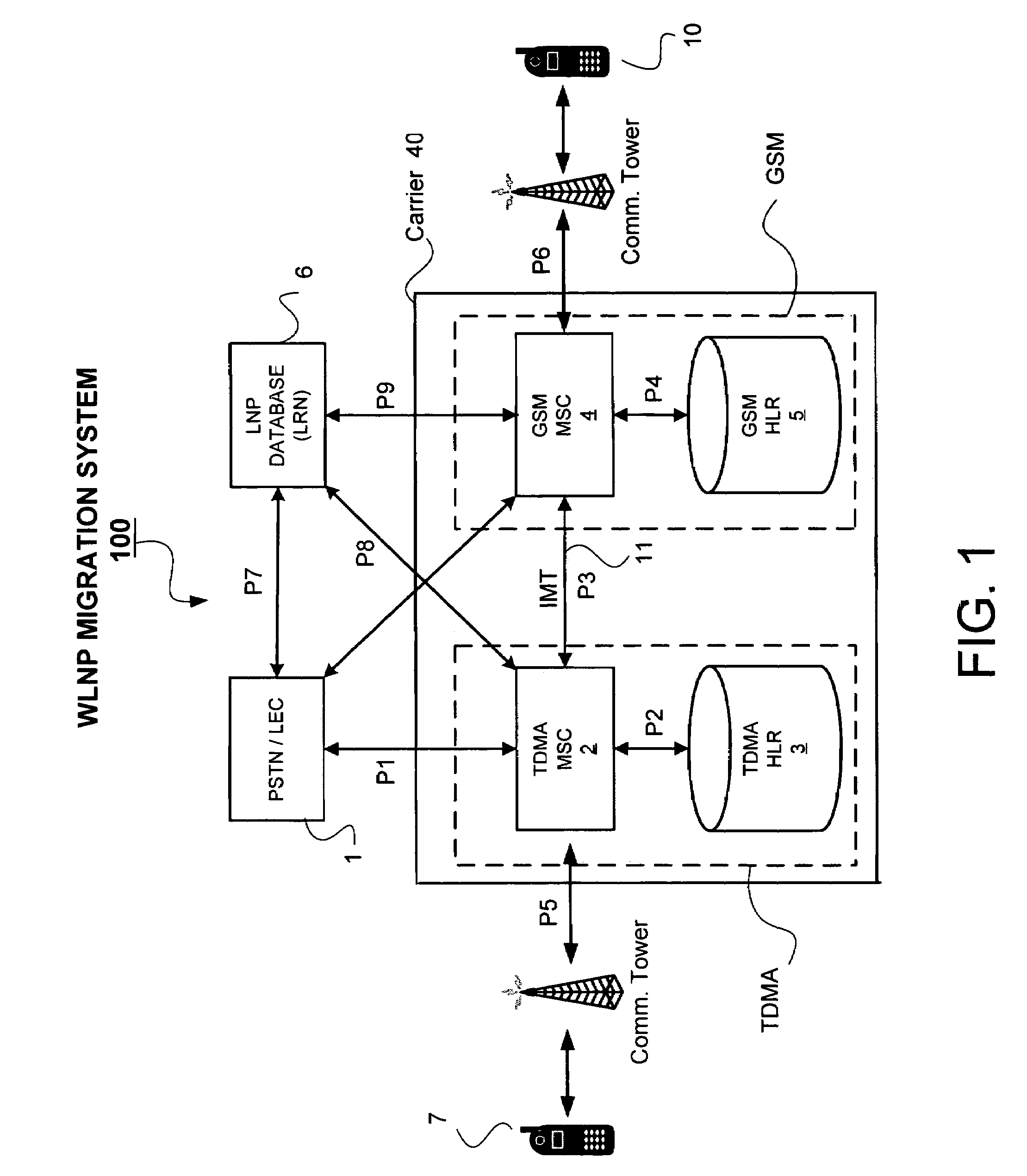Systems and methods for providing service migration between first and second cellular technologies
a technology of cellular technology and service migration, applied in the field of migration of subscribers between first and second cellular technologies, can solve the problems that the solution did not take into account the use of wlnp functionality, and achieve the effects of reducing the number of subscribers
- Summary
- Abstract
- Description
- Claims
- Application Information
AI Technical Summary
Benefits of technology
Problems solved by technology
Method used
Image
Examples
Embodiment Construction
[0042]Particular embodiments of the present invention will now be described in greater detail with reference to the figures.
[0043]Conventionally, carriers generally operated on a single technology network. Accordingly, there was no need to migrate numbers between two technology network systems intra-carrier. However, currently, carriers may operate on more than one technology network. Thus, there is a need to facilitate the migration of a number from a first technology network system to a second technology network system.
[0044]FIG. 20 is an exemplary illustration of a WLNP migration system 100 that provides migration of subscribers from a first technology network system to a second technology network system intra-carrier in accordance with systems and methods of this invention. In particular, the WLNP migration system 100 routes a call flow placed from an originating phone 7 (for example, by a landline phone or a cellular device) to a destination phone (such as a destination phone 2...
PUM
 Login to View More
Login to View More Abstract
Description
Claims
Application Information
 Login to View More
Login to View More - R&D
- Intellectual Property
- Life Sciences
- Materials
- Tech Scout
- Unparalleled Data Quality
- Higher Quality Content
- 60% Fewer Hallucinations
Browse by: Latest US Patents, China's latest patents, Technical Efficacy Thesaurus, Application Domain, Technology Topic, Popular Technical Reports.
© 2025 PatSnap. All rights reserved.Legal|Privacy policy|Modern Slavery Act Transparency Statement|Sitemap|About US| Contact US: help@patsnap.com



